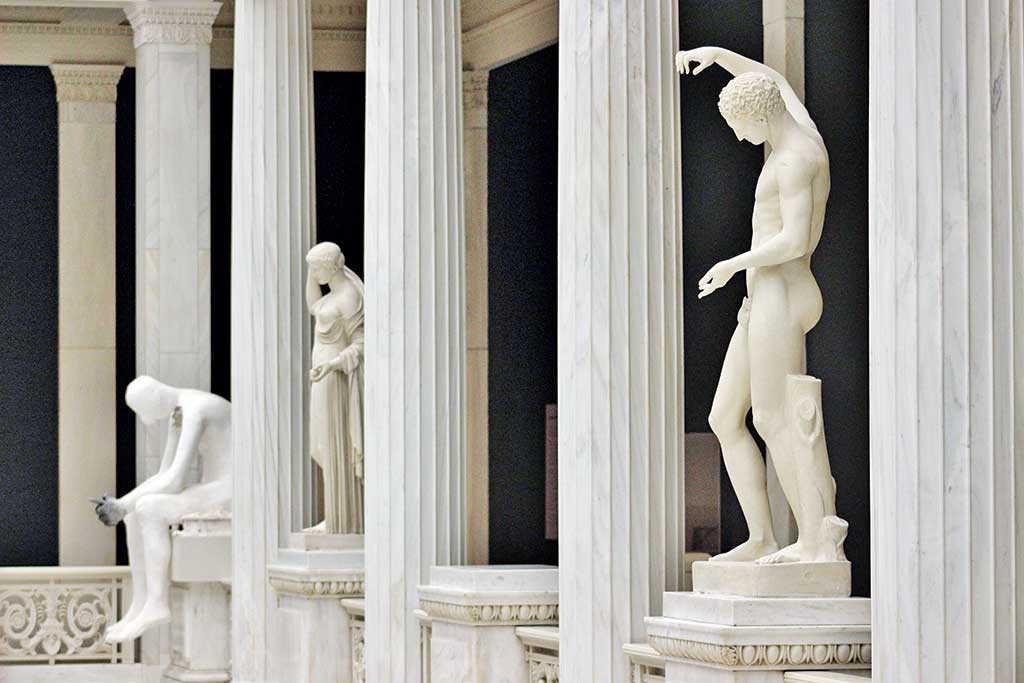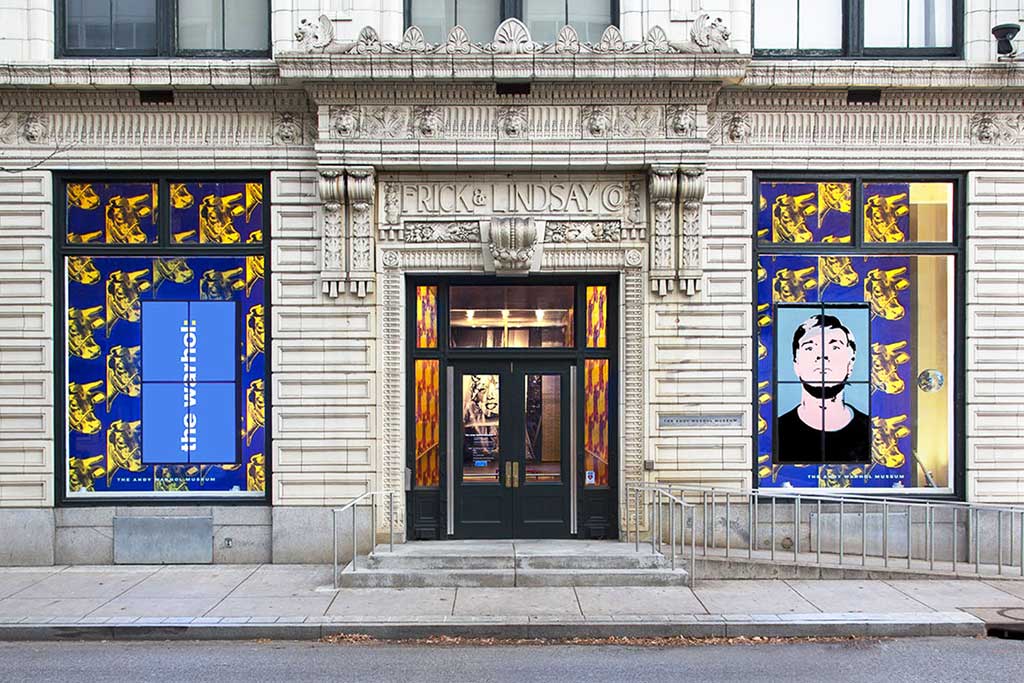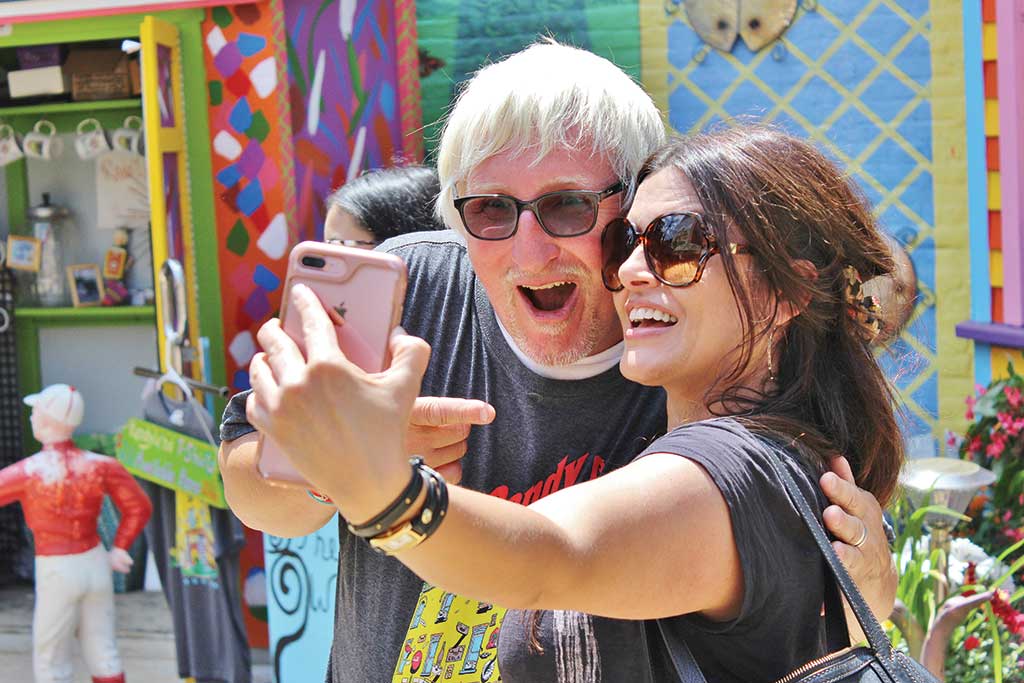Artists of all stripes have found ample room to spread their creative wings here. Native headliners include Andy Warhol, Mary Cassatt, Martha Graham, August Wilson, Gene Kelly, Christina Aguilera, and Billy Porter of Kinky Boots fame.
Throughout its 260-year history, Pittsburgh has been reborn, renewed, and recast multiple times over. Divided from eastern Pennsylvania by the Appalachian Plateau, the city, even today, feels hidden away. Regionally, Pittsburgh is seen more as the capital of Appalachia, more associated with that region and its stereotypes. Yet, pocketed just outside the physical boundaries of the Northeast, Midwest, and South, Pittsburgh is a city without a region. In long diasporic decline, the population hovers just north of 305,000 people, roughly half of its heyday, including “The Lost Generation” that departed in the post-steel era.
This elusive and ambiguous sense of identity and belonging, unsurprisingly, compels much local soul-searching.
In his 2009 book The Paris of Appalachia, Pittsburgh Post-Gazette journalist Brian O’Neill writes of his hometown: “This city is not Midwestern. It’s not East Coast. It’s just Pittsburgh, and there’s no place like it. That’s both its blessing and its curse.”
For artists past and present, it is very much the former. Amid the introspection, Pittsburgh’s creative class is at the forefront of resuscitation, revival, and returning beauty to blight. Generating heartbeats in every corner of the city and its suburban fringes, art in many forms contributes much to the Pittsburgh’s identity and soul.
Take Barebones Productions for example. Led by artistic director Patrick Jordan, this critically acclaimed theater group is renowned for its edgy original productions and reinvented classics.The group is presently finishing construction on its new dedicated performance space, the 70-seat Barebones Black Box. Especially noteworthy is its location—the recovering former steel town of Braddock, ten miles east of Pittsburgh. Housed in the former site of one of the first indoor Chevrolet dealerships in the US, the venue shares space with Superior Motors, a long-anticipated restaurant from star local chef Kevin Sousa.

Carnegie Museum of Art, Hall of Sculpture credit Jeff Heilman
Passing through Braddock in 2012 while on another assignment, my hostsatthetimementionedChefSousa’sintentionstoset-upshop.That seemed brave and ambitious for the visibly impoverished borough, but he was not alone, as another pioneer, Mayor John Fetterman, was already leading an arts-driven revitalization. As Pittsburgh Magazine noted in its 2013 “Braddock Rising” feature, the York, PA native, who moved to Braddock in 2001, had attracted national media attention (New York Times, Rolling Stone, and others) … “for his outspoken belief that art, artists, and unconventional ideas can revive a town.”
Now running for lieutenant governor of Pennsylvania, Fetterman’s many contributions include helping to arrange financing for Superior Motors. Combined with the theater, adjacent courtyard and neighboring UnSmoke art gallery, this community-driven hub exemplifies new heartbeats through art.
Another example is the Carrie Blast Furnaces in nearby Rankin, where retired iron workers lead seasonal guided tours of their National Historic Landmark plant. Along with the massive blast furnaces and infrastructure, attractions include the Carrie Deer, a 40-foot sculptural deer head created 20 years ago as a monument to the site by trespassing artists using metal pipes, tubing, and other scrap material.
In downtown Pittsburgh, Bricolage Production Company, aptly named for “making artful use of what is at hand,” aims to “immerse artists and audiences in adventurous theatrical experiences that foster connections and alter perceptions.”
Art and culture pervade Pittsburgh, tempting the perspective of the entire city as one giant creative studio.
The urban infrastructure alone is epic. What nature created—a beguiling topography of escarpments, slopes, and hollows—architects, engineers, and builders conquered, artfully hewing 90 neighborhoods into this mountain-hemmed three-dimensional framework, interconnected by a madcap weave of roads, bridges, and tunnels.
Nervous drivers, especially in winter, may want to discover Pittsburgh via Uber, Lyft, or the historic Yellow Cab of Pittsburgh, now zTrip. But to delve fully into this urban maze, a sturdy compact car with well-muscled brakes and reliable GPS is your all-access ticket.
Vying with San Francisco and Seattle for America’s hilliest city, Pittsburgh’s vertiginous streets include the nation’s steepest, Canton Avenue, with a 37 percent gradient. In neighborhoods like Polish Hill, homes and businesses edge down near vertical inclines. Seated at the confluence of the Allegheny, Monongahela, and Ohio Rivers, Pittsburgh has more bridges (446) than its area code (412), and at least three more water crossings than Venice. Multi-lane convergences and switchovers make it easy to get lost. Pittsburgh is also one big amusement park-like ride.
Wonder moments include the Shangri-La approach from the southwest. Instead of that mythic valley’s waterfall, Mount Washington obscures the city from view. Disappearing into the rock face via the Fort Pitt Tunnels, you then emerge in full view of Pittsburgh’s skyscraper-forested “Golden Triangle.” The New York Times called it “the best way to enter an American city.” The cinematic effects unfolds as you then cross the Monongahela River via the Fort Pitt Bridge, painted, like many of its siblings, in Aztec Gold, and enter downtown. Hollywood thinks so too, choosing Pittsburgh for recent movies including The Perks of Beinga Wallflower, The Dark Knight Rises, Out of the Furnace, and American Pastoral.
Within this construct, artists of all stripes have found ample room to spread their creative wings here. Native headliners include Andy Warhol, Mary Cassatt, Martha Graham, August Wilson, Gene Kelly, Christina Aguilera, and Billy Porter of Kinky Boots fame. Countless others, locals and transplants alike, have flourished in Pittsburgh’s milieu.

The Andy Warhol Museum, Pittsburgh by Abby Warhola
Richard Parsakian is a classic example. Architecture degree in hand, the Upstate New York native arrived here in 1971 as a VISTA volunteer with the Pittsburgh Architect’s Workshop, providing free design services to lowincome families and non-profits. He never left.
“The artistic vibe was strong,” recalls Parsakian. “It came from the landscape, the environment, the people. My instinct said stay.”
Today, many of those same people he met in 1971 are the leaders of Pittsburgh’s artistic and cultural community, heading up arts organizations, dance companies, theaters, and more. Parsakian himself is at the head of the class, tirelessly supporting the city’s arts, social causes, and Pittsburgh’s LGBTQIA+ community.
In 1972, the year before Pittsburgh’s inaugural Pride march, Parsakian co-published the city’s first LGBT newspaper, The Gay Times. Long involved with PrideFest, he owns a 30by 60-foot rainbow flag. Sewn together by an artist friend from two 30by 30-foot sections, the flag, carried by up to 30 people, has appeared at every Pride March and significant political event over the past 25-plus years. Money thrown into the flag goes to LGBT charitable organizations; count advocacy and fund-raising among his primary contributions, including for women’s reproductive rights and HIV/AIDS care.
Serving on multiple boards, including the Pittsburgh Dance Council, Planned Parenthood, Associated Artists of Pittsburgh, and the Mayor’s LGBTQIA+Advisory Council of Pittsburgh, Parsakian’s most visible contributions hail from his passion for costume and event design.
In 1986, after buying and selling vintage clothing and accessories from his apartment, he opened Eons Fashion Antique. One of Yahoo Style’s top 25 vintage stores in the nation, his celeb-magnet boutique has served as a veritable wardrobe department for numerous film, television, theater, and dance projects. Located in Shadyside, one of Pittsburgh’s more gay-centric neighborhoods, Eons also supplies Parsakian’s many fashion-driven benefits, fundraisers, and other charitable endeavors.
As art goes, so goes LGBT life, and in Pittsburgh, that’s been especially true of the drag culture. “In terms of acceptance and getting the LGBT voice out more in public, promoting drag has created a significant step forward for the community,” says Parsakian, whose forefront efforts include mentoring drag queens and creating the popular Divas of Drag event at the annual Ellsworth Avenue Music, Dance, & Arts Showcase. “Several years ago, a gay friend in the arts got the Pittsburgh Cultural Trust, which redeveloped downtown’s former red-light area into the Cultural District, to host a drag competition at one of its mainstream theaters. That was a first, and huge step ahead. After Pittsburgh’s Sharon Needles won RuPaul’s Drag Race in 2012, drag performers were not only in vogue, but in demand, for premiere fundraisers and other events.”
Revered for its weekly sell-out drag shows, Blue Moon, in the East End’s Lawrenceville neighborhood, is Pittsburgh’s drag mother ship.
Ms. Needles is among many queens who launched here, collaborating with Alaska Thunderfuck (winner of RuPaul’s All Stars Drag Race in 2016) and veteran local queen Cherri Baum on the venue’s legendary Haus of Haunt show. Other Blue Moon notables include Dixie Sherwood, Bambi Deerest, Amoxie Villain, and Artemis LaCreme.
Blue Moon sits by Allegheny Cemetery, an exceptional rural cemetery from 1844 filled with artful tombs and monuments, including a literal family tree. It also sits in the 16:62 Design Zone, a distinctive 56-block area featuring unique home furnishings, antiques, and objects d’art. Notable galleries include Paul Michael Bierker, whose original jewelry pieces are inspired by science fiction, fantasy, and gaming.
The spirit of collaboration vitally sustains the overall scene. “These days, you can’t go it alone,” said Parkasian. “Thankfully, artistic and cultural organizations are very open-minded here, with Pittsburgh’s many community allies thirsty to collaborate.”

Randyland Visitor Selfie with Randy credit Jeff Heilman
The Carnegie Museum of Art in Pittsburgh’s Oakland neighborhood is one prime example. From the ancient to the contemporary, the absorbing galleries in industrialist Andrew Carnegie’s grand 1895 vision include the Hall of Architecture, featuring one of the world’s largest collections of plaster casts of architectural masterpieces. Located in the national landmark Carnegie Institute and Library complex, the museum is one of four in the Carnegie collection. Another, in the same complex, is the Carnegie Museum of Natural History, featuring a globally preeminent dinosaur collection.
Born in nearby South Oakland, Andy Warhol studied at the museums and Carnegie Mellon University. His namesake museum, on Pittsburgh’s North Shore, is the third. Overlooking the Ohio River, the nearby Carnegie Science Center completes the quartet.
“The Andy Warhol Museum is another event partner, complete with a billion-dollar collection,” says Parsakian, whose fashion shows and fundraisers there included one for the Pittsburgh AIDS Task Force. Calling the museum “a gay mecca,” he praises former Executive Director Tom Sokolowski for “opening up the Warhol to be more than a place of discussion.” Or, as the Pittsburgh City Paper noted after Sokolowski’s departure in 2010, a venue “whose exhibits, parties, performances, and screenings regularly drew a cross-section of Pittsburgh’s artiest, wackiest, most fabulous, and culturally curious people.”


